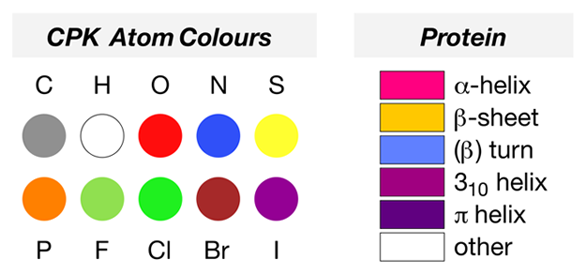Captopril [2]
Mechanism of action
Captopril is the smallest orally active tight-binding peptide analogue inhibitor of angiotensin converting enzyme (ACE). The thiol-coordinating group of the inhibitor makes a direct interaction with the catalytic Zn(2+) ion (distance, 2.15 Å) (Figure 3 A). Additionally, the captopril molecule is held by eight H-bonds, including three with water molecules. The central carbonyl oxygen positioned between the thiol and the terminal proline moiety of captopril is anchored by two strong H-bonds with His337 and His497. One of the oxygen atoms from captopril's proline carboxylate group is held by interactions with side-chains of residues Gln265, Lys495 and Tyr504. The other oxygen of the proline is held indirectly by water-molecule-mediated interactions with Asn261 and Glu150. A network of water molecules makes indirect interactions between the carboxylate oxygen and with Arg356, Asp360 and Gln361.
For an optimised view of the bound drug in the JSmol window, reload the file and select the following sequence of buttons:
Model options CPK > Binding site H-bonds, Figure 3 A view > Drug molecule Show within 8 Å

Crystal structure of Drosophila melanogaster angiotensin-converting enzyme in complex with captopril [PDB structure code 2X8Z]
M. Akif, D. Georgiadis, A. Mahajan, V. Dive, E. D. Sturrock, R. E. Isaac and K. R. Acharya, J. Mol. Biol., 2010, 400, 502–517 (doi:10.1016/j.jmb.2010.05.024).
